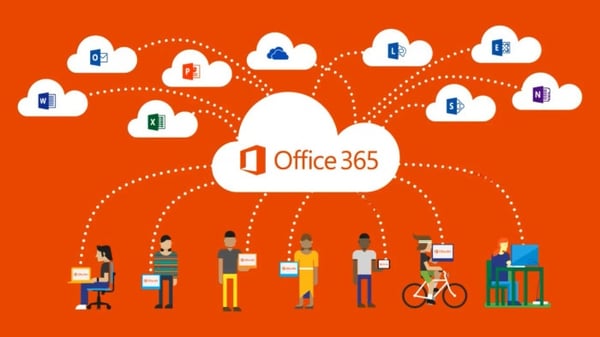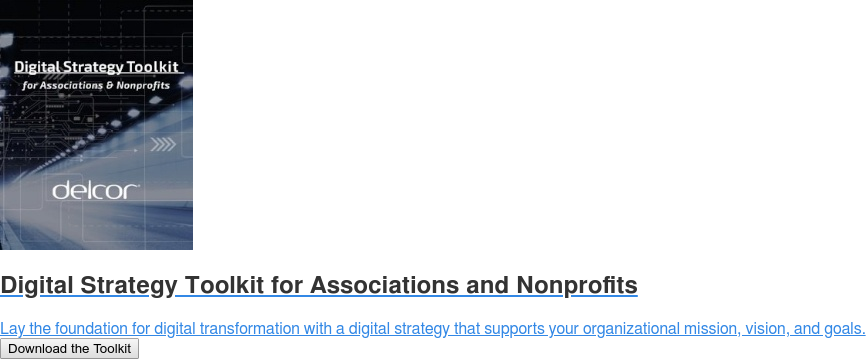The powerful Microsoft marketing engine has convinced many organizations that switching to Office 365 is a no-brainer—and it can be. But first, you have to figure out which 365 components will work (or not) for your organization.
Office 365 is a bigger package than many associations need. Using some pieces of 365 could be a good solution for your organization, but only if you know what you’re doing or have the assistance of someone who does.
In this post, we’ll review some of the most common 365 applications and what you need to consider before making a switch to Office 365.
Why organizations move to Office 365
Some of the reasons organizations use Office 365 include:
- It’s a predictable and affordable monthly expense as opposed to buying and implementing new software and hardware every few years.
- A monthly subscription for Office 365 licenses means your version is always up to date.
- For each individual license, 365 can be installed on up to five devices, including iPads and other mobile devices.
- It’s a scalable option that can grow as your organization grows.
- The organization wants to host their email on 365.
 Organizations pay a monthly subscription (or licensing) fee per user for Office 365, a cloud-based collection of software and services. Microsoft offers several licensing levels for small, medium, and large organizations and different packages of applications. For example, many associations use the Enterprise E3 license, which includes:
Organizations pay a monthly subscription (or licensing) fee per user for Office 365, a cloud-based collection of software and services. Microsoft offers several licensing levels for small, medium, and large organizations and different packages of applications. For example, many associations use the Enterprise E3 license, which includes:
- Hosted Email
- Office Productivity Suite
- Word
- Excel
- PowerPoint
- Outlook
- Access
- OneNote
- Publisher
- SharePoint
- OneDrive for Business
- Skype for Business
- Access
- Teams
- Yammer, Sway, Stream, and more.
It’s an impressive list, but Office 365 isn’t providing the best-in-breed for each category. Microsoft throws everything into 365 and lets users figure out what works best for their organization. Some solutions even overlap! And, in typical Microsoft fashion, they’re letting their large user base help determine which applications are winners and which aren’t.
Don’t assume you should use a product just because it’s in Office 365. Most organizations don’t have the capability, expertise, or financial resources to handle all the 365 tools.
Points to consider with popular Office 365 applications
As part of your business case to move to Office 365, you should determine which 365 products to use and how you will use them. You also have to decide whether you should spend money on (a) implementing these 365 applications or (b) a better alternative outside the Microsoft brand.
Many organizations use Office 365 for email—and this is a good use of the software. But what they don’t always understand is that there are additional costs, such as backups for email. Just because your data is in the cloud doesn’t mean you shouldn’t back it up!
Let’s talk about SharePoint. You won’t find many alternatives out there that can do everything SharePoint can do. It’s a monster platform (like Salesforce) and, therefore, not easy to administer. And sometimes, not easy to afford—if you want to take full advantage of its capabilities, you can easily run up an implementation bill in the high five figures.
Replacing a traditional file server (shared drives) with SharePoint requires a good deal of planning and ongoing management. If all you need is a file sharing/collaboration platform, you could opt for a simpler SaaS alternative. On the other hand, SharePoint is a solution to consider if you’re looking for a product that provides automated workflows, websites, and integration with SQL databases.
Microsoft is replacing Skype for Business with Teams, its chat and team collaboration application. Teams combines various 365 functionalities—in fact, the file collaboration piece is SharePoint. It doesn’t offer the same functionality as other collaboration tools, such as Slack, so make sure it meets your requirements.
Another intriguing 365 tool is Delve, which shows the user a mix of content—their documents and documents their colleagues are working on—organized by what’s likely to be most relevant to the user at that moment. Some of our clients are starting to use Delve, so we’ll have more to share on that in the future.
Everyone loves to beat up on Microsoft, but they are investing heavily in the Office 365 products and improvements are released much more frequently than in the old days.
What to consider before migrating to Office 365
Before making a decision to switch to Office 365—or any other product—do a requirements analysis so you can review and document your migration, training, and ongoing administration needs. Here’s a bit more insight on each of those areas.
Requirements analysis
Many associations go it alone when migrating to Office 365 and later wish they hadn’t. We suggest bringing in a consultant who can guide you through a requirements analysis to help direct your purchasing choices. They can help you:
- Understand how to use 365 products and when to look elsewhere.
- Navigate the dozens of different licensing packages.
- Develop a plan for using 365 products now and a roadmap for the future.
A consultant will also prompt you to consider other issues, for example:
- Do you need to meet any regulatory requirements?
- Are you prepared for the EU’s General Data Protection Regulation (GDPR), which goes into effect in May 2018?
- Do you need to implement two-factor authentication? (Yes, you do).
- Are your users mostly mobile or mostly not? (Are you sure?)
You also need to consider backups. Microsoft includes some backup/restore functionality, but it’s limited. For example, the ‘deleted items recovery’ option in Outlook or Legal Hold is not an effective point-in-time restore. Many organizations decide not to pay a third party for backup and, instead, assume the risk. You may require a better backup solution than that—your decision should be based on your organization’s business requirements and recovery objectives.
Migration
Migration is not something you need to know how to do unless you plan to do it over and over, like we do. Why spend time learning how to do something so complicated, especially when it’s so difficult to get right? We’ve seen many weak Office 365 implementations because smart people go it alone without having the necessary experience.
For example, associations that migrate email by themselves typically don't take full advantage of Office 365’s email capabilities. Or, they find themselves in a worse position than before because they didn’t handle the migration correctly.
You know what they say: proper planning prevents poor performance. Public folder migrations require lots of planning and experience. For example, you must:
- Fully document your network files and email access, and make the proper configurations.
- Follow the correct process to decommission the existing mail environment, because if it’s not handled correctly you’ll end up with unintended (and unwelcome) consequences.
- Identify integrations with the existing system. Does your AMS send emails using your mail server? Does your scanner save to network drive?
A seasoned consultant will identify the numerous issues that may come up during (and after) migration and address them proactively. If everything is done correctly, downtime during migration is measured in minutes and nightmares are prevented.
Training
You must have a plan for training—one that’s tailored to your organization. System administrators will need training not on migration, but on managing your system after migration. They have to know how to develop policies and procedures for using the system.
Staff will need to learn how to use the different tools in Office 365. Don’t forget remote workers—they will also need training on how to use 365 products. If you’re introducing new products to your staff, training is a good way to improve user acceptance and gives you an opportunity to communicate the expected value of these new products.
Administration
Finally, let’s talk briefly about administration. In short, instead of managing Office 365 on their own, many associations partner with a Managed Service Provider that has expertise in Office 365 and/or with a firm that has expertise in a particular product, like SharePoint.
If you’re looking closely at Office 365, you have to know which components to implement and how those components will work (or not) for your organization. It’s both a requirements project and a product selection project—in other words, a product fit analysis project. If you want to make sure you do select the right 365 products and implement them successfully, we’ll say it again: bring in a team to help.


